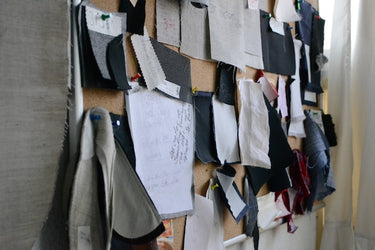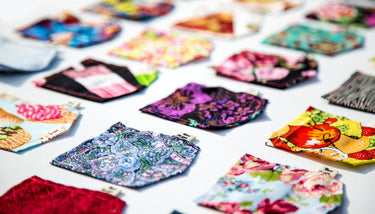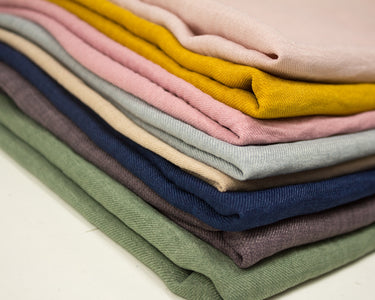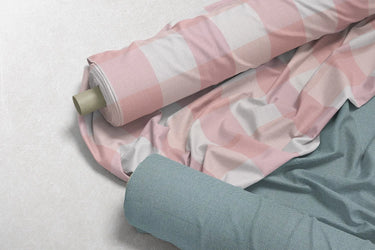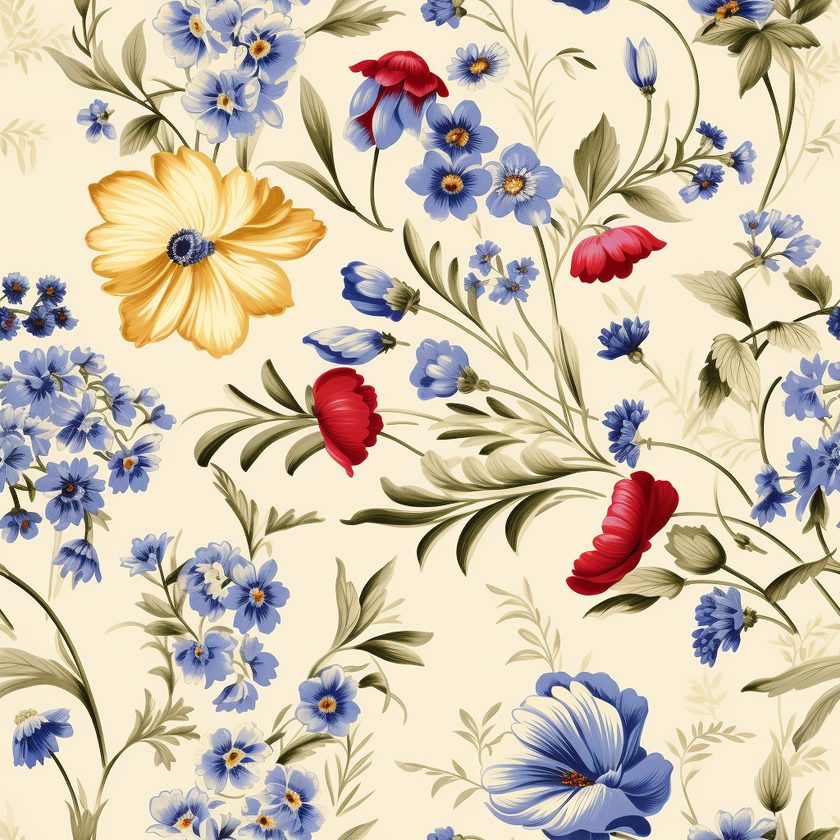

While it’s true that FabricGenie allows anyone to create beautiful fabric designs, it is equally true that spending a little effort on learning how to use this tool will yield significantly improved results.
Having a basic understanding of design styles, colour theory and composition will help you achieve results much closer to your expectations.
This article explains what makes a good or bad FabricGenie description and shows how your choice of words or uploaded image can make a significant difference to the designs you receive.
FabricGenie Modes
There are four different methods of instructing FabricGenie to generate your designs:
Theme Mode
Theme mode consists of a form with five fields; theme, style, elements, foreground colours and background colours.
These fields force you to consider the elements you wish to be included in your design. FabricGenie will make its own decisions about any of the elements left empty.
While Theme mode does make it easier to generate designs quickly, it offers less flexibility and control than using Text mode. If you are an advanced user, interior designer or textile designer we strongly recommend using Text mode instead of Theme mode.
Text Mode
Text mode allows you to describe your design in minute detail. For users knowledgeable about fabric design, this option offers much greater control than Theme mode. I explain how to get the best results from Text mode below.
Text & Image Mode
Text & Image mode allows you to upload an image to be used for colour reference only. You will enter a text description to specify the type of design you require. Your generated design will include colours that either match or complement those within your upload image.
Image Only Mode
Image Only mode allows you to upload an image of an existing design. FabricGenie will then attempt to produce a close variation (but not a copy) of the design you have provided.
When uploading images be sure to crop the image to only the part containing the design you wish to be considered by FabricGenie. For example, if your image is of some wallpaper being held in a hand, FabricGenie will include a hand in the resulting design.
Examples of good and bad descriptions
Having a basic understanding of different design styles, colour theory and composition allows you to generate higher quality designs compared to using broad, generic terms.
Let’s illustrate this with some examples.
Here is a design generated with the text description; “blue and pink thistles”

While the design isn’t unpleasant, and does match the description provided, the colours are a little unsubtle, and the design somewhat unrefined.
Now let’s adapt the description by adding a little more detail: “Soft pink and muted blue printed thistles in cream and tan, playful repetitions, colourful, Whistlerian style.”

Bad example: “red, purple and blue flowers”

Good example: “flowers in shades of red, purple and blue on a cream background, detailed botanical illustrations, exquisite detailing, light red and olive green, English countryside, fine line details, organic feel.”

As you can see, providing a more precise description helps FabricGenie gain a better understanding of type of design you would like to see.
Design Styles
Almost every great designer is inspired by the work of other artists and designers. FabricGenie is no exception. Including the name of a well-known artist or designer in your description (e.g. William Morris) will results in designs inspired by (but never copying) the work of the designer you specify.
Example: “floral design in a William Morris style on a dark background”

Describe a design, not a command.
A common error we see is people including commands or words not part of the required design.
For example, FabricGenie assumes that all designs will be used for soft furnishings so there is no need to include the intended usage in your description. FabricGenie treats descriptions literally. Therefore, including the word 'curtain' in your description will result in images of curtains in your design.
Bad example: “Design a curtain inspired by Japanese woodblock prints and Imari porcelain with saturated colours.”

As attractive as this design may be, the pleating and the background prevent it being used to print fabric.
In a similar way, descriptions including items of furniture will result in those objects appearing in the design.
Bad example: “A fabric to use on bookcase doors that looks good with an orange chair and white and wood themed office.”

Letters, Words & Numbers
FabricGenie cannot (yet) accurately reproduce words, letters or digits in a design.
Example: “Abstract design with the word ‘Mandy’ in red letters”

Negative words
Using words in your description to exclude elements from your generated design is more likely to lead to the undesired element being included rather than excluded.
For example, this request for “Wildflowers with cowslips and bluebells but not poppies” results in the following image with red poppies included.

When FabricGenie sees the word “Poppies” in the description it assumes this is a required element.
You will achieve a much better outcome by stipulating what want to be included in your design rather than what you don’t want included.
Example: “cowslips and bluebells only”

Bad example: “Morris & Co Kelmscott tree style but with border terriers instead of birds. On cream background.”

Instead of excluding birds in the design, FabricGenie sees the word “birds” and assumes that is a required component.
Instead, this user should have stated what they do want included in the design.
Good example: “Morris & Co Kelmscott tree style with border terriers. On cream background”

Uploaded images
When using FabricGenie’s Image & Text mode, any image you upload will only be used as a colour reference. Our AI system first examines the colours found in your image. It then adds those colour names to your text description. Therefore, referencing your uploaded image in your text description will not produce the desired result.
Bad example: “Same design as the uploaded image but with white and greys”
Key Take-aways
- Provide FabricGenie with as much detail as possible.
- Describe the design only, not how you intend to use the fabric.
- Include the names of established designers or design styles.
- Do not mention elements you do not wish to be part of the design.
- Uploaded images are used for colour reference only.
- Requests for words, letters or digits are unlikely to work.
Now test what you have learned by creating your own beautiful design with FabricGenie free today.
We hope you found this article helpful in improving the results you get from FabricGenie.



